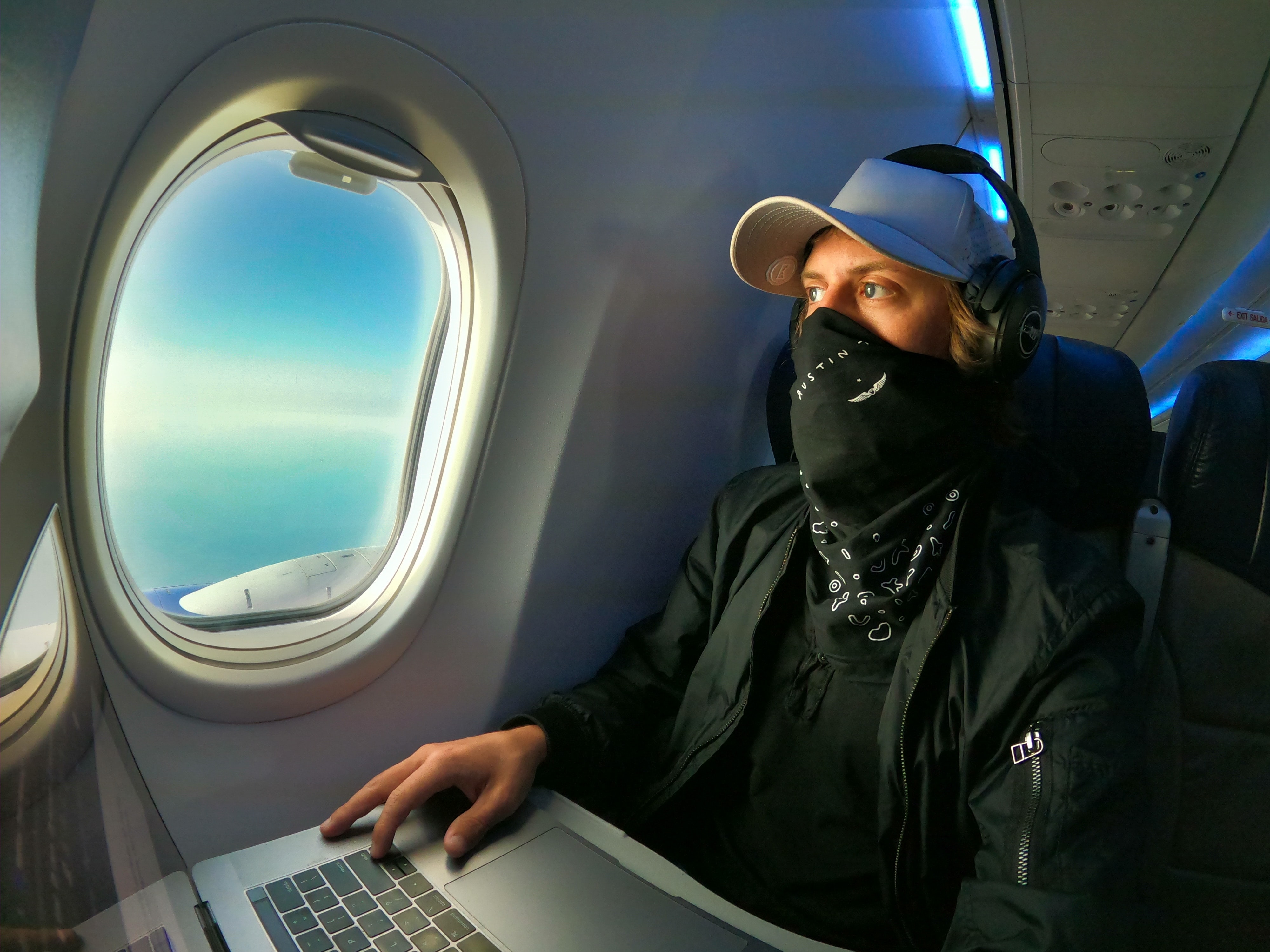Let us know what type of content you'd like to see more of. Fill out our three question survey.
The Future of Work: A Review on the Trending Phenomenon of Digital Nomads
Sep 8, 2022
In 2020, the world witnessed and experienced the COVID-19 pandemic reshape organizational cultures and how people define work in their lives. Companies shifted their models to accommodate working from home, and that trend continues, as an Upwork study estimated that by 2025, 22 percent of the U.S. workforce will be remote workers. The reshaping of work also pushed further the phenomenon of digital nomads.
Unpacking Digital Nomads
The term digital nomad was first introduced in 1997 by Tsugio Makimoto and David Manners to describe an outcome of technological advancement on people’s lives. They defined digital nomads as people in the process of their professional activities that are not confined to a specific spot due to internet and mobile communications (the term can also apply to those pursuing non-professional activities, such as studying or hobbies). More recently, the Journal of Social Media + Society defines digital nomads as a population of “independent professionals who rely heavily on digital media and communications, are not bound to the constraints imposed by traditional organizations, and prioritize variables such as cheaper living costs when deciding where to live.” Digital nomads use their remote flexibility to travel more, making them dissimilar to telecommuter workers who use their remote flexibility to “cut down costs of transportation, avoid office-based distractions, and provide childcare-friendly scheduling,” according to a paper published by the International Journal of the Sociology of Leisure. The same paper characterizes the population as highly educated professionals in their 30s who own “strong passports” that provide them access to work in many countries, even if for short periods of time.

Social media creators such as Gabby Beckford, popularly known as “Packslight” on various platforms, dispel research that catalogs digital nomads as individuals in their 30s who prefer not to self-label (the hashtag #digitalnomads on TikTok alone populates over 80 million posts). Beckford—most recently featured on CNBC, Afrotech, and the New York Post—is a 26-year-old multi-award-winning creator, Gen Z travel marketing expert, and public speaker that quit her full-time engineering job during the height of the pandemic to digital nomad. With more than one million subscribers or followers dispersed across her website, Instagram, TikTok, LinkedIn, Pinterest, and YouTube channels, and with services such as e-books and consulting calls for individuals aspiring to be a digital nomad, Beckford’s example supports research that describes the phenomenon as a lifestyle movement that sells itself via personal blogs, Instagram feeds, in-person conferences, news features, and numerous e-books. Furthering her aim to inspire more travel, Beckford created the “Young Travelers Network,” a community of more than 4,000 global citizens ages 16 to 30 who “share stories, connect, give confidence, and collectively aim to empower other youths to see the world as early as possible.” On her website, you can find many interviews with digital nomads from all walks of life; some may argue (or maybe just us) that interviews conducted by digital nomads about digital nomads offer a unique perspective into the driving force and culture behind the phenomenon.
Societal changes, such as the pervasiveness of mobility and technology in everyday lives, combined with increasingly flexible and precarious employment (as COVID-19 and recessions have proved), drive digital nomadism. Beckford is one of many taking to social media to teach others how to join the movement in a more connected world. The MBO Partners 2021 State of Independence study found that more than 15 million American workers describe themselves as digital nomads, a 42 percent increase from 2020 and a 112 percent increase from the pre-pandemic year 2019.
An Exploration of Freedom, Home, and Neo-Nomadic Communities
A quick Google search of the “pros and cons of being a digital nomad” will yield first-person accounts on why or why not to consider the trend or lifestyle. The themes of freedom, cultural awareness, and community are among the pros of digital nomadism, while some cons are loneliness, the inability to save money, and burnout. We dove into the most seemingly popular themes mentioned on first-person accounted digital nomad blogs—freedom, home, and community:

Photo: Creative Commons BY-SA 2.0.
Freedom: Multiple blogs describe the strong sense of freedom in living in a location independent from their employers’ headquarters. The freedom to pick the ideal living environment for self, the freedom to avoid requesting time off from work to explore, and even the freedom to choose how your day is scheduled are among the mentioned benefits. Though these freedoms are significant and deserve recognition, considering they are factors that push this population to take flight (pun intended), it should be noted that digital nomadism does not entirely detach one’s citizenship from their nation-state. The concept of what it means to be “free” as a digital nomad can be challenged, as research shows differences between “lifestyle mobility”—or the ongoing semi-permanent moves of varying durations—versus “freedom of travel opportunities.” Lifestyle mobility often relies on competence, resourcefulness, endurance, fortitude, and an ability to plan one’s moves. As the digital nomads’ population increases, sufficient empirical based research and academic attention are required to properly conceptualize the freedoms attached to this population.
Studies pose that individuals are more likely to move within arranged frameworks that limit their ability to choose rather than just “going anywhere.” Arranged frameworks include the validity of visas and passports that define conditions and periods one can visit and exit, social security, taxation, health benefits, and other national obligations. Countries like Anguilla, Brazil, Estonia, and more, have challenged arranged frameworks like visa limitations by creating special visas or programs exclusively for digital nomads to promote longer-term stays. For example, the Remotely From Georgia program enables digital nomads to work within the former Soviet state for one year. All digital nomads need to prove is that they have the financial ability to pay taxes while staying in the country and have a minimum monthly salary of $2,000. In the Czech Republic, digital nomads can apply for a Zivno visa, which lasts for one year. To be considered, applicants need to pay a variable fee, provide proof of a minimum income of about $5,000, pass an immigration interview, and receive a trade license that insists applicants work within the country. Thailand, which is considered one of the best islands for digital nomads to live, considering their co-working spaces, cafes, and fast internet speed, is leading the charge by offering digital nomads 10-year visas and meager tax rates. The result of countries and governments changing their laws to welcome this population shows a correlation between the increase of self-actualization as a human priority and the economic losses that tourism-dependent countries can experience.
Home: Digital nomads tend to list the action of exploring the world as an opportunity that justifies leaving your home-base or community to find a new one. The concept of “home” or “away” is nuanced and becomes even more destabilized as terms like “lifestyle traveler”—which describes a subtype within backpacker tourism for whom traveling is a cemented way of life—are more commonly used. While being away from home can result in neo-nomadic urbanism-based communities (neo-nomadic urbanism focuses less on the mobility of traveling and more on the adaptive response to an increasingly dynamic situation of life that pushes one to travel), it can also leave digital nomads with feelings of loneliness.
It can be difficult to form bonds with people you meet because of the limited time spent in most locations. When you stay in one location for months or even years, you’re able to get to know people. By contrast, nomads usually stay in one location for just a few weeks. Along with loneliness comes missing your family and friends back home. The definition of lifestyle mobility shows the lack of intention to return “home” among some digital nomads can result the difficulty forming long-lasting relationships. In Dr. Olga Hannonen’s paper, In search of a digital nomad: defining the phenomenon, she argues that disparaging the importance of one’s home or lifestyle mobility overlooks the consideration of home being a non-physical location that includes emotional ties that digital nomads have to occasionally passing through destinations to visit friends and relatives, and other obligatory visits. Hannonen states that the idea of no return is restrictive, for the answer remains unknown on if returning home for digital nomad means “settling” or a simple a transition into the broader category of nomadism.
Community: Makimoto and Manners’ study from 1997 predicted that the grip nationality-based ties have on individuals would loosen and be replaced with other connections as digital tools penetrate the globe. A 2016 paper states that neo-nomadism—the desire to create new forms of subjectivity and bonding based on lifestyle due to the desire to “reject mainstream societies toward countercultural or nomadic lifestyles”—tend to reject homeland-centric identities. A 2019 study noted that neo-nomads and lifestyle travelers “seek the company of like-minded people” in changing locations to “spend their time with people who share similar lifestyle and values.” This perspective has been gaining traction in emerging research on digital nomadism, and gathering spaces are already shifting to sustain this community; this is seen through nomadic-focused co-working spaces, unconferences, cruises, and more. Hannonen states that nomadic-focused gathering events “replace other attachments and belongings, such as traditional workplace community, residential neighborhoods, and even nation states.” The desire to connect among digital nomads has spurred countries like Thailand and Indonesia—which are emerging hotspots for digital nomads—to accommodate the population looking for deterritorialized communities.
Destination: The Future of Digital Nomads
While much is still to be researched on the evolution of digital nomads in an increasingly connected world, contemporary knowledge draws similar themes across literature: digital nomads are mobile professionals and lifestyle travelers. However, this definition creates space for this population to be conceptualized as a group solely associated with leisure or work. While freedom of choice and self-actualization have become worldwide trends since the 1980s, birthing populations such as digital nomads, there remain gaps in research that address the economic, social, and even political influence that this population has in ties to governance, international affairs, and globalism. Additional empirical evidence and conceptual framing of digital nomads requires deeper dive into the various mobile connections and relocation of digital nomads and how that impacts their daily mobile work. As digital nomads continue to rise in numbers, whether that be in the form of full-time workers or freelancers, it is essential to consider this population as an influential member of digital transformation and a north star guiding the future of work as we know it.